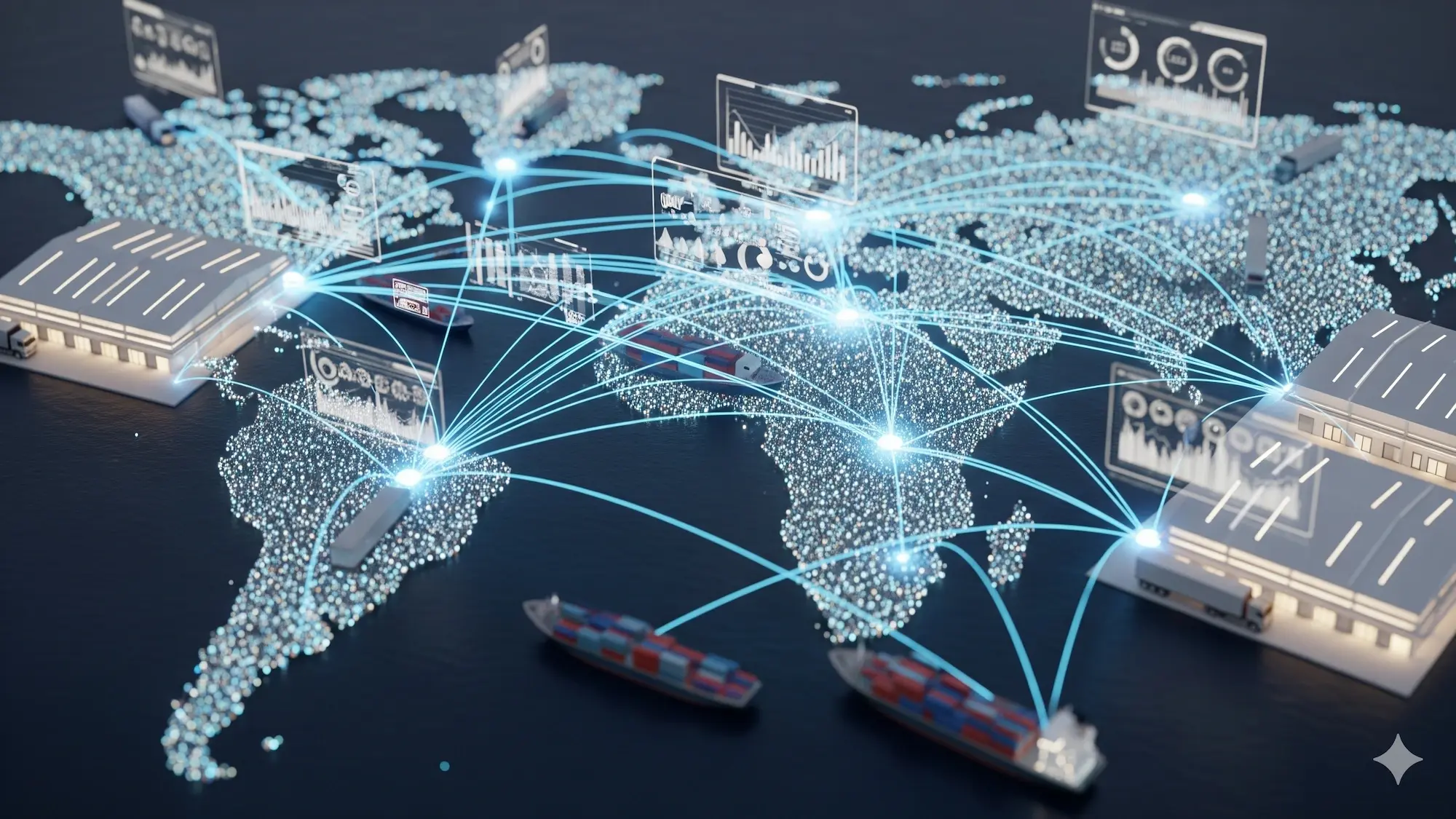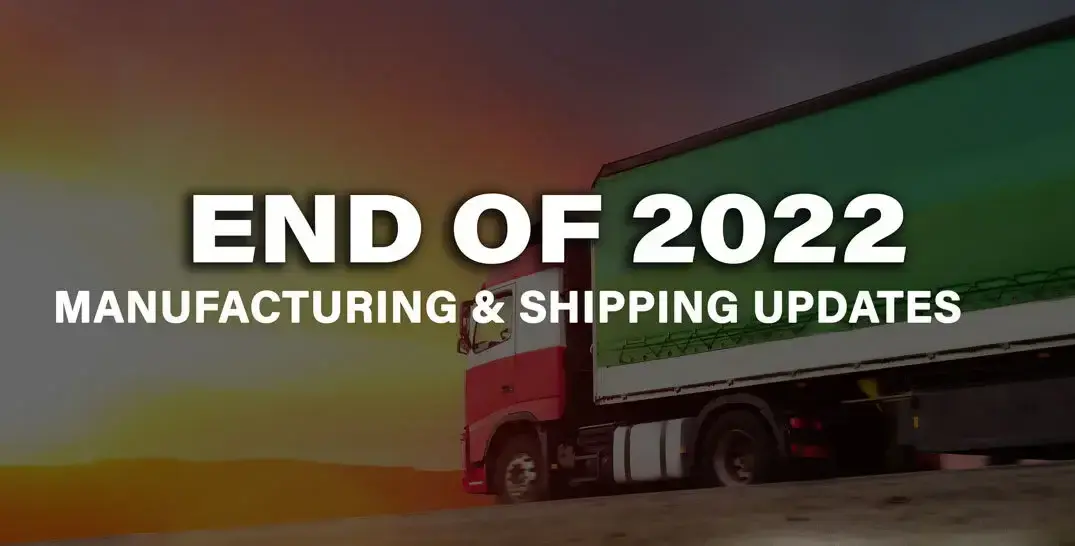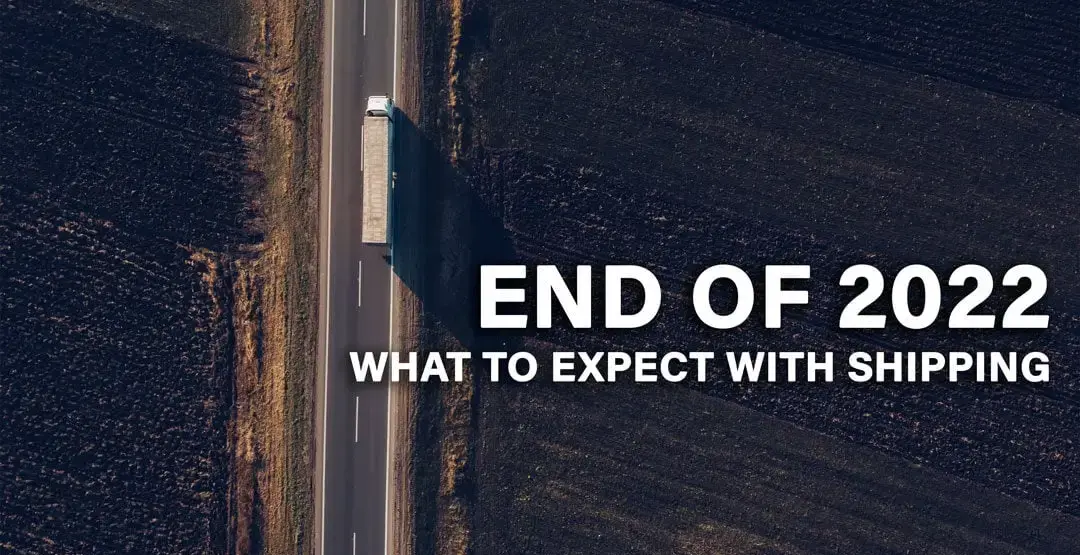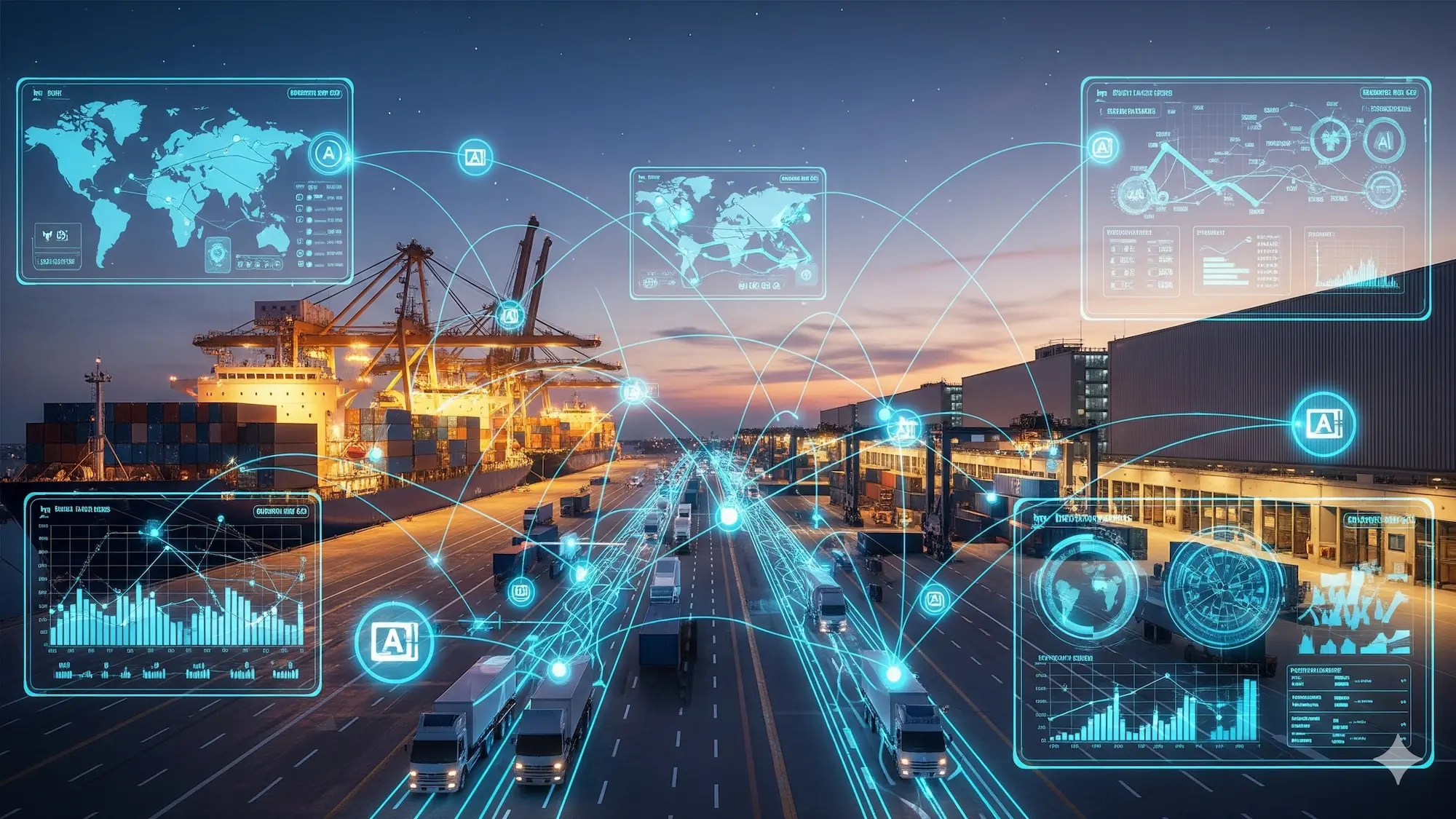
Have you ever hit "refresh" on a tracking page, only to see the same vague update for the fifth time? That familiar feeling of being in the dark, wondering exactly where your critical shipment is, its status, and when it will actually arrive, is a common frustration in modern logistics. In today's fast-paced, unpredictable world, knowing a container is "in transit" simply isn't enough.
Traditional tracking is a reactive, fragmented system. It's a series of disjointed data points that tell you where something was at a specific time, but it leaves out the crucial details: why it's there, its condition, and what potential challenges lie ahead. This limited perspective often leads to a cycle of constant phone calls, emails, and guesswork, turning what should be a smooth process into a stressful ordeal.
This is where the concept of end-to-end supply chain visibility comes in. It represents the next evolution in freight forwarding, moving far beyond simple location tracking. End-to-end visibility provides a holistic view of the logistics journey, from when a product is manufactured to its final delivery. It's not just about knowing where your shipment is; it's about understanding the entire process. This empowers you to make proactive decisions and transform your supply chain from a series of static points into a dynamic, intelligent network.
The Evolution of Visibility: From "Where?" to "What?"
For decades, the "old way" of managing freight was built on a foundation of siloed information. A freight forwarder would provide an update from the carrier, a customs broker would handle paperwork, and a warehouse manager would update inventory, all operating independently. This created a fragmented picture where a shipment could get "lost" for days, stuck in a port or waiting for clearance, and no one would have a clear, real-time understanding of its status.
Leading businesses are moving past this. They're embracing a unified approach that integrates data from all supply chain stages. Think of it less like a single-lane road and more like a car's dashboard. You don't just know your speed; you have instant, real-time access to the fuel level, engine temperature, and tire pressure. This unified view, delivered through a single platform, is the hallmark of modern supply chain management.
The need for this unified approach is clear.
A global survey by GEODIS found that only 6% of companies believe they've achieved full end-to-end supply chain visibility.
This staggering statistic highlights the widespread lack of comprehensive insight and the significant gap between what companies need and what they currently have.
Data as a Strategic Asset: The Brains Behind the Operation
Proper visibility isn't just about collecting data; it's about transforming it into actionable intelligence. Raw data—a GPS ping, a temperature reading from an IoT sensor, or a customs clearance timestamp—is valuable only when integrated and analyzed to provide meaningful insights. This transforms digital freight data from a passive log into a strategic asset.
So, what kinds of data are we talking about? It includes:
-
Real-time location and status: Going beyond a simple location to include its current state (e.g., "en route," "awaiting clearance," "delayed").
-
Predictive ETAs: Using historical data and current conditions (like traffic or weather patterns) to provide a more accurate estimated time of arrival. This is a hallmark of supply chain resilience.
-
IoT sensor data: Sensors can monitor temperature, humidity, and shock for sensitive cargo like pharmaceuticals or fresh produce, providing a digital record of the cold chain's integrity.
-
Inventory levels: Tracking stock across warehouses and in transit to prevent stockouts and optimize inventory management.
-
Milestone tracking: Monitoring key events like vessel departure, port arrival, and final delivery, all from one dashboard.
Imagine a company shipping high-value electronics. End-to-end visibility allows them to monitor shipments from the factory floor to the store shelf. If an IoT sensor in a container detects an extreme temperature fluctuation, the system can automatically flag it, allowing the company to investigate and address the issue before the goods are delivered, preventing a potential product recall or a costly dispute.
Risk Mitigation and Proactive Problem Solving
In global logistics, disruption is the new normal. Risks are everywhere, from port congestion and geopolitical issues to extreme weather events. End-to-end visibility is the most powerful tool for building supply chain resilience and is critical to the future of freight forwarding because it allows businesses to anticipate and respond to these risks before they escalate.
Instead of reacting to a crisis after the fact, a company with full visibility can see it coming. For example, consider a business that imports high-demand consumer goods for the holiday season. Their visibility platform identifies a sudden and significant increase in port congestion at their destination. The data shows a major bottleneck that will likely delay their vessel's unloading by several days.
Armed with this information, the supply chain manager can proactively work with their freight forwarder to divert the shipment to a nearby, less-congested port or arrange for immediate, prioritized inland transportation once the container is finally unloaded. This simple, proactive decision—enabled by a comprehensive view of the supply chain—avoids a multi-day delay, keeps the goods on shelves, and protects their market position.
Operational Excellence and Enhanced Collaboration
Beyond mitigating risk, a holistic view of the supply chain drives significant operational improvements. Internally, it increases efficiency by optimizing routes, reducing manual tasks, and cutting unnecessary communication. By having all the information in one place, teams can make faster, more informed decisions. Cost savings are another significant benefit; for instance, a clearer picture of container movements can help a company reduce costly demurrage and detention fees.
Externally, visibility enhances collaboration with partners and customers. When all stakeholders—the shipper, the carrier, and the receiver—access the same real-time information, it eliminates miscommunication and the endless "where is it?" phone calls. For customers, this transparency translates into a better experience. Proactive updates and accurate ETAs build trust and loyalty, turning a business relationship into a true partnership.
A New Era of Proactive Logistics with Customodal
End-to-end visibility is no longer a luxury; it's the foundational pillar of a resilient and competitive supply chain. It's what transforms a reactive operation into a proactive one, allowing you to anticipate disruptions, optimize performance, and build trust with every shipment. The future of logistics is not simply watching your goods move; it's about understanding the entire journey and leveraging that knowledge to your strategic advantage.
However, achieving this level of transparency is complex. It requires not just cutting-edge technology, but deep expertise to integrate systems, analyze data, and navigate the intricate landscape of global logistics. This is where partnering with the right freight forwarder becomes essential.
This is where Customodal comes in. We understand that your supply chain isn't just a series of transactions—it's a strategic asset. Our core mission is to empower your business with technology by providing a powerful, unified view of your logistics network. We move beyond simple tracking to offer the actionable intelligence you need to make swift, informed decisions.
With Customodal, you get more than a freight forwarder. You get a partner dedicated to delivering the end-to-end visibility that ensures your cargo arrives on time, your operations run smoothly, and your business remains agile in the face of uncertainty. We believe true partnership is built on transparency and trust, and we provide the tools and expertise to make that a reality for your business. If you're ready to move beyond the frustration of fragmented tracking and embrace the power of proactive logistics, discover how Customodal can help you build a supply chain that's truly resilient and ready for the future.





